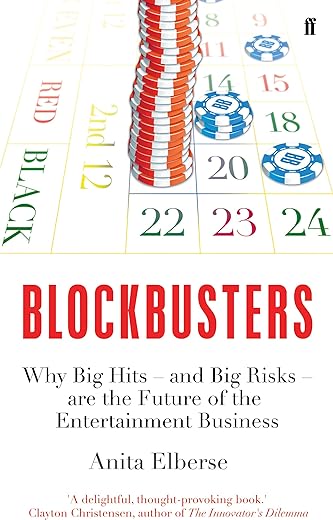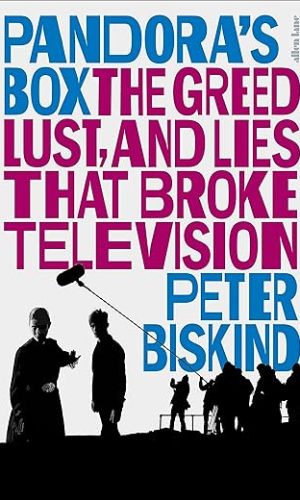Blockbusters: Why Big Hits – and Big Risks – are the Future of the Entertainment Business
£12.20£14.20 (-14%)
What is behind the phenomenal success of entertainment businesses such as Warner Bros., Marvel Enterprises and Manchester United – along with such stars as Jay-Z and Lady Gaga? Which strategies give leaders in film, television, music, publishing, and sports an edge over their rivals?
Anita Elberse, Harvard Business School’s expert on the entertainment industry, has done pioneering research on the worlds of media and sports for more than a decade. Now, in this groundbreaking book, she explains a powerful truth about the fiercely competitive world of entertainment: building a business around blockbuster products – the movies, television shows, songs and books that are hugely expensive to produce and market – is the surest path to long-term success. Along the way, she reveals why entertainment executives often spend outrageous amounts of money in search of the next blockbuster, why superstars are paid unimaginable sums and how digital technologies are transforming the entertainment landscape.
Full of inside stories emerging from her unprecedented access to some of the world’s most successful entertainment brands, Blockbusters is destined to become required reading for anyone seeking to understand how the entertainment industry really works – and how to navigate today’s high-stakes business world at large.
‘Convincing . . . Elberse’s Blockbusters builds on her already impressive academic résumé to create an accessible and entertaining book.’ Financial Times
Read more
Additional information
| Publisher | Faber & Faber, Main edition (16 Jan. 2014) |
|---|---|
| Language | English |
| Paperback | 320 pages |
| ISBN-10 | 0571309224 |
| ISBN-13 | 978-0571309221 |
| Dimensions | 13.4 x 2.2 x 21.5 cm |









by Paul Dervan
I found Blockbusters really interesting. Anita Elberse backs up her very strong recommendations with data and research. If you are involved with marketing launch strategies, you’ll enjoy it. In many ways, the book is also about “content” strategies, but gets into more detail than much of the buzz on content marketing around right now. This is a unique book – in the sense that I haven’t read any other book that tackles blockbuster strategies in this way. I’d strongly recommend it.
by Agent K
Anita did it again! A top analysis on ent. biz.
by Amazon Customer
I liked how much research went into this book and how many examples, which is always great when being presented with a new statergy or fact,
I reccomend it as one of the tools to expand the business mind.
by Olly Buxton
If you’re the sort of person who sees only one movie a year, that movie is unlikely to be
Dersu Uzala
.
If you are a movie executive that piece of learning ought not to seem radical or new. It certainly isn’t a function of the information revolution, and would have been as true when Derzu Uzala was released in 1976 as it is today. Yet it is the intellectual cornerstone of Anita Elberse’s provocative new book “Blockbusters” which, while dismantling the New-Age canard of the Long Tail is otherwise far less overwhelming than the commentariat seems to believe.
The blockbuster hook is simple: if you are a global media conglomerate like Warner Brothers or Real Madrid, you are better betting the farm on a small number of “blockbuster” projects than diversifying your resources and “managing for margins” a portfolio of smaller projects. Elberse compares Warner, who did this, which NBC TV, who did not, and reaches her conclusion.
Her false premise is to suppose that, in plumping for yet another Harry Potter movie, Warner Brothers really is “risking big”. As a matter of fact, it isn’t. It is goosing its scale, but risking small: the five films on its annual slate will all be totally formulaic (those that are not remakes or sequels are in tried-and-true genres), will rely on well-established stars and directors, and will deploy immense production resources to deliver superficial fireworks without challenging norms or demanding any great commitment from viewers.
Warner targets precisely the sort of person who sees only one – or five – movies a year, because that’s how many it makes.
Some all-but-self-evident assumptions:
*The marginal return on each additional movie ticket you sell tends (but never quite gets) to 100%: All other things being equal, the more people see your movie, the greater your profit margin will be.
*Most filmgoers see a given film only once.
*More filmgoers see five movies a year than see 50.
*Those filmgoers who see only five films won’t be seeing Derzu Uzala.
If you take these assumptions as good then, if your movie studio has the requisite resources, it is only sound business sense to make your movie one of the five movies that almost everyone will go see. Likewise, if you don’t, reset your priorities and your target demographic accordingly. But expect that your revenues will be accordingly constrained. There are only so many swine before whom to cast your pearls.
This is, as Elberse notes, of a piece with refocussing business strategies adopted by Apple, GM, Fender and other resurgent business lines: don’t try to be all things to all people; clear out your inventory, figure out what you’re good at and hit that channel relentlessly. Quit wasting time at the periphery.
Leave the tail, that is, for those poor toilers who have no option but to target it. But make no mistake: these toilers are vital to your ecosystem, and without them the big fish could not do what they do: the small guys discover and nurture new talent, do the research and development and build reputations of up-and-comers to the point where, for a Warner Brothers, they become safe enough to bet the house on. Even though she intimates this, Elberse’s theory asserts not that only blockbusters should be made, but that *blockbuster-sized studios should only make blockbusters*: everyone should focus at the top of their own segment of their market.
This is really only sound common sense.
The question which Elberse doesn’t address is what effect this has on the statistical distribution of film budgets. If every producer applies a blockbuster strategy in its own segment, this will tend to make the head taller and fatter, and the tail skinnier and, at the limit, shorter. And so it transpires: According to the Financial Times, in 2000, 1 per cent of artists accounted for 71 per cent of pop music sales. Last year, the same proportion accounted for 77 per cent.
Perhaps Elberse’s theory, which owes nothing at all to the digital revolution, suggests the anointed few are getting smarter, and are hitting their channels more clinically than they used to. But down the tail lurks a much more interesting question: what happened? How was Chris Anderson so wrong? How is it that, all things being considered, the infinite time and choice vouchsafed by digital revolution has led to us exercising fewer choices?
Olly Buxton
by ponynop
Well researched and interesting insight into this phenomena. Perhaps slightly biased though with very little emphasis on how the power of good art is still relevant to huge success.
by Si Chen
Get to know this book in a media course in Kellogg business school. As a textbook for that course, it is really good. Covers everything needed to knew about this industry.
by R. Harrod
Excellent so far…when I have time to complete
by Will
Excellent and very informative book showing why the entertainment business is such a big earner, but also so difficult to break into. Well researched and excellent examples and interviews. Would be great for anyone studying media and the entertainment industry.